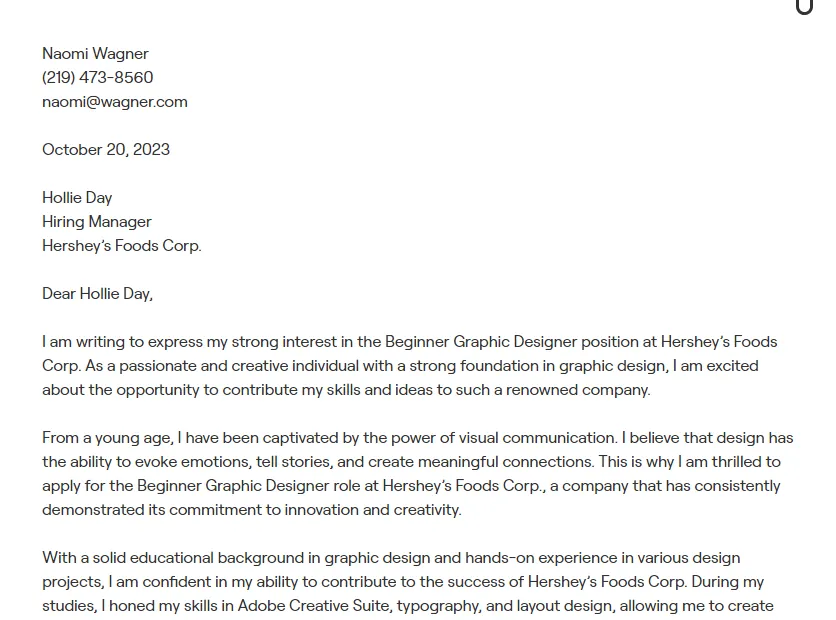Cover Letter Example for Graphic Designers
As a graphic designer, your portfolio is crucial, but a well-crafted cover letter can significantly boost your chances of landing your dream job. This guide offers a detailed cover letter example, along with essential tips and strategies to help you create a compelling application that captures the attention of potential employers. We’ll explore the key elements of a successful cover letter and provide examples tailored to different scenarios, ensuring you know how to impress your dream clients and secure your desired role.
Understanding the Importance of a Cover Letter
A cover letter serves as your first introduction to a potential employer, providing an opportunity to showcase your personality, enthusiasm, and specific skills beyond your resume. It’s where you can articulate your passion for graphic design and explain why you’re the ideal candidate. Think of it as a personal sales pitch that convinces the hiring manager to delve deeper into your portfolio and consider you for an interview. It’s your chance to make a memorable first impression and stand out from other applicants. By clearly stating your interest and aligning your skills with the job requirements, you significantly increase the likelihood of getting noticed.
Highlighting Your Skills and Experience
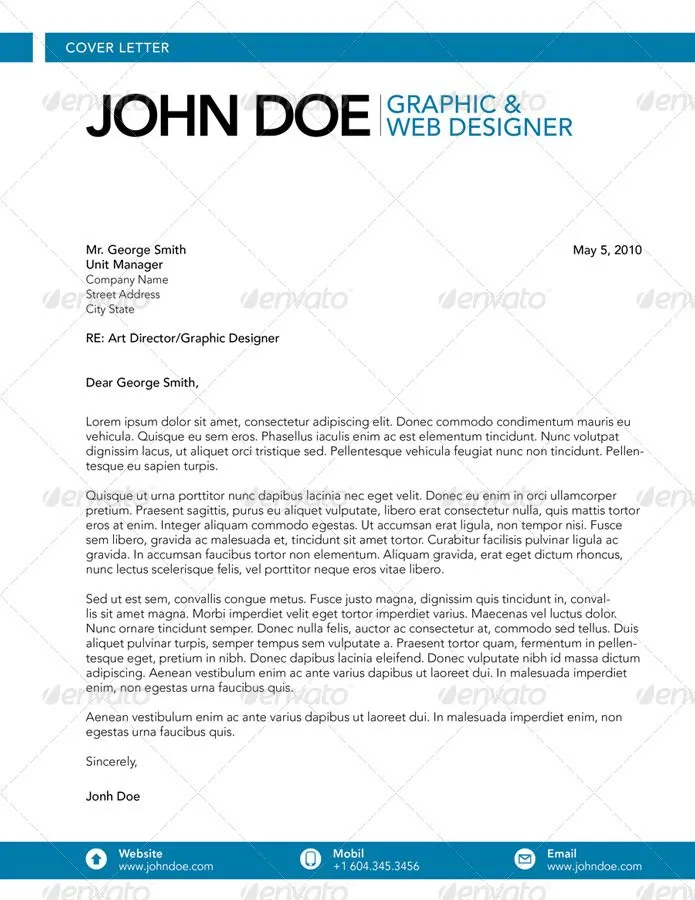
Your cover letter should spotlight your relevant skills and experience, but don’t just list them. Provide specific examples of how you’ve applied these skills to achieve successful outcomes. For instance, instead of saying “Proficient in Adobe Creative Suite,” detail a project where you used Photoshop to retouch product images, resulting in a 20% increase in online sales. If you have designed logos, websites, or marketing materials, briefly describe the challenges you faced and the creative solutions you implemented. Emphasize your ability to solve design problems and deliver results that align with the client’s or company’s goals.
Tailoring Your Cover Letter to the Job
Generic cover letters rarely impress. Customizing each letter to the specific job and company is critical. Research the company’s values, mission, and recent projects. Identify the key requirements mentioned in the job description and demonstrate how your skills and experience align with those needs. Show that you understand the company’s brand and the target audience. Use the company’s name and the hiring manager’s name (if available) to show that you’ve taken the time to personalize your application. This level of personalization signals your genuine interest and increases your chances of getting a positive response.
Cover Letter Structure and Format
Header and Contact Information
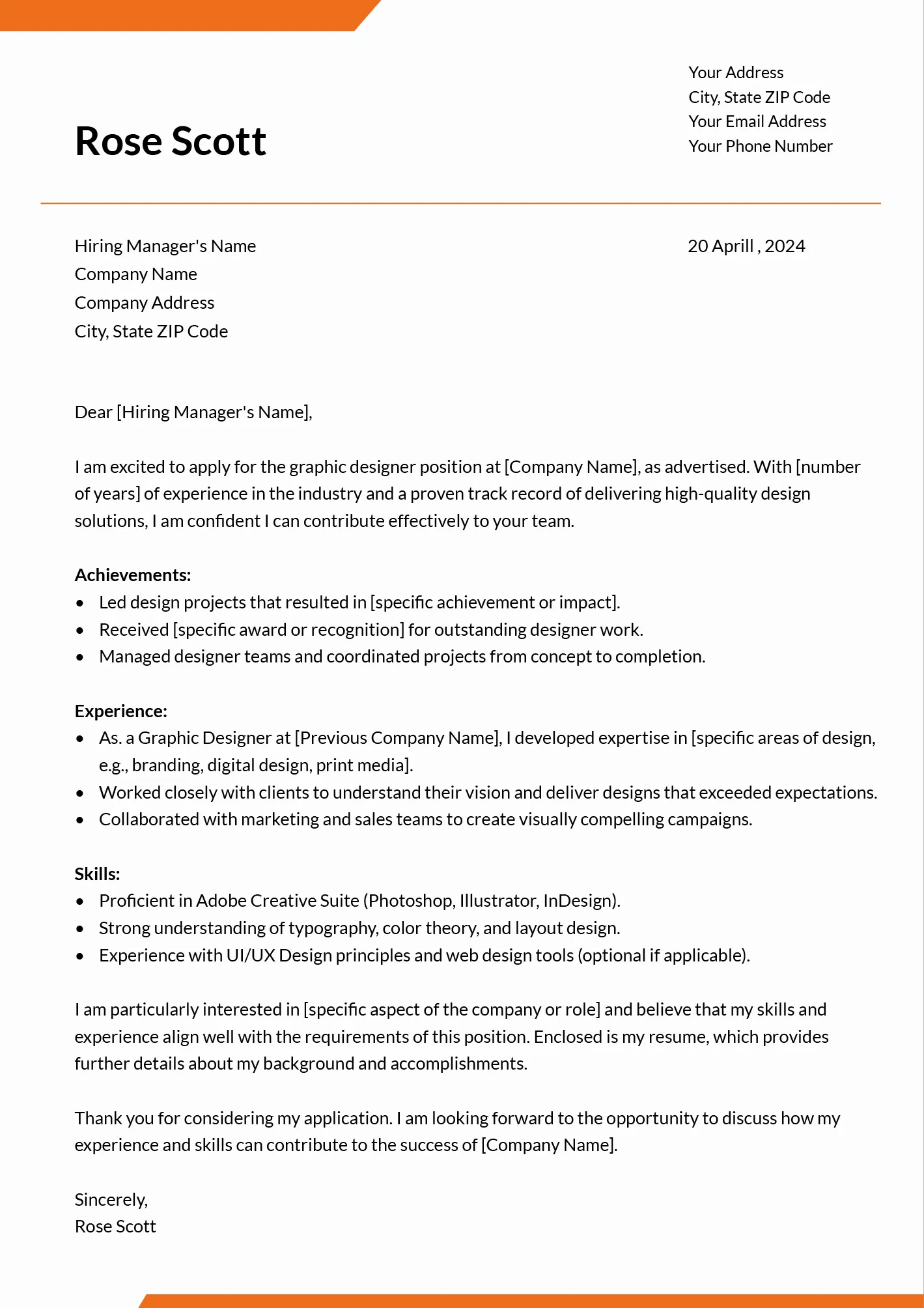
Begin with a professional header that includes your full name, contact information (phone number, email address, and LinkedIn profile URL). Also, add the date and the recipient’s contact information, including the hiring manager’s name and the company’s address. Make sure your contact information is accurate and up-to-date, as this is how the employer will reach you for an interview or further communication. The header should be clean, well-formatted, and easy to read.
Greeting and Introduction
Address the hiring manager by name (if known). If you can’t find a name, use a professional greeting like “Dear Hiring Manager.” In your introduction, state the specific position you’re applying for and briefly mention where you saw the job posting. Immediately capture the reader’s attention by highlighting your most relevant skills and experience and express your enthusiasm for the opportunity. This opening statement should make the hiring manager want to read the rest of your letter.
Body Paragraphs
The body of your cover letter is where you showcase your skills, experience, and achievements in detail. Use 2-3 paragraphs to highlight your most relevant qualifications. Provide concrete examples of your work, such as successful projects, design contributions, and results you have achieved (e.g., increased engagement, improved user experience). Tailor these examples to the specific job requirements. Explain how your skills align with the company’s needs and what you can bring to the table. Use action verbs to describe your accomplishments, such as “designed,” “developed,” “managed,” and “achieved.”
Call to Action and Closing
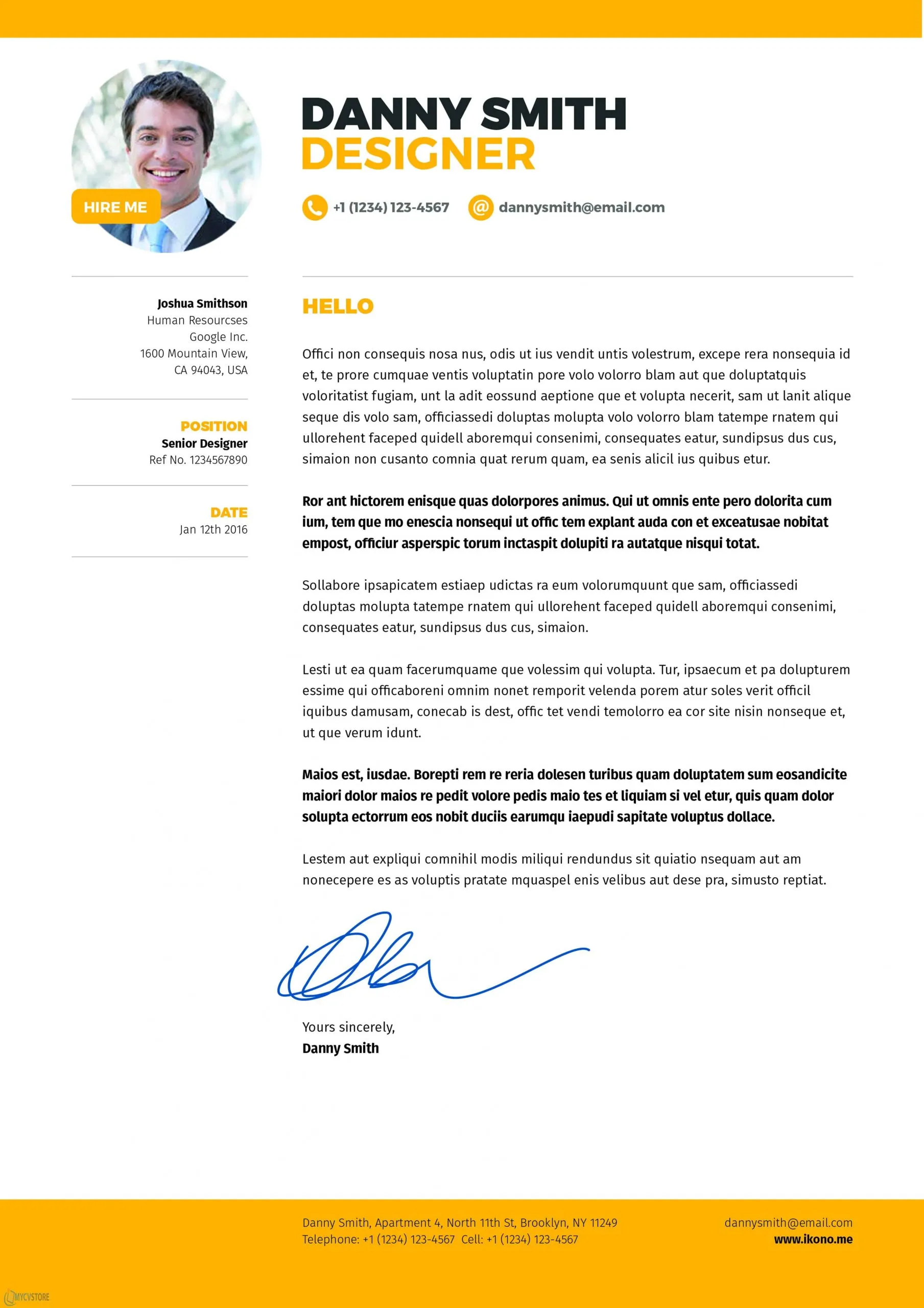
Conclude your cover letter with a clear call to action. Express your interest in an interview and thank the hiring manager for their time and consideration. Reiterate your enthusiasm for the position and provide a way for them to reach you, such as mentioning your phone number again. End with a professional closing, such as “Sincerely” or “Best regards,” followed by your typed name. Proofread your cover letter meticulously before sending it to ensure it is free of errors.
Showcasing Your Graphic Design Skills
Portfolio and Examples
Your portfolio is your most vital asset as a graphic designer. In your cover letter, mention your portfolio URL prominently. Briefly describe the types of projects showcased in your portfolio, highlighting the ones that align with the job requirements. If relevant, mention specific projects that demonstrate your skills in areas like branding, web design, or print design. Provide direct links to key projects or specific examples that are most relevant to the job. A well-curated and accessible portfolio is essential for impressing potential employers. Including direct links makes it easy for the hiring manager to review your work.
Quantifiable Achievements
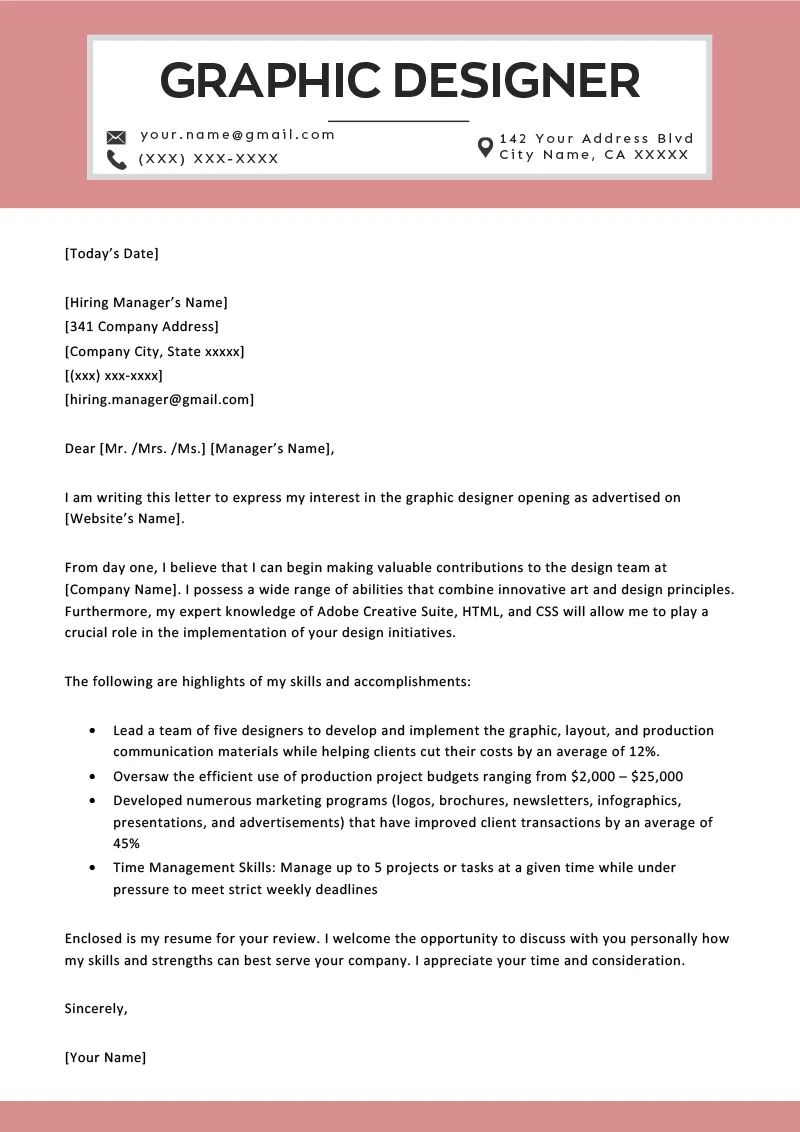
Wherever possible, quantify your achievements to demonstrate the impact of your work. Instead of saying “Improved website design,” state “Increased website conversion rates by 15% through improved user interface design.” Use data and metrics to illustrate your successes. For example, mention how your designs increased brand recognition, reduced marketing costs, or generated more leads. Quantifiable results make your achievements more convincing and show your ability to deliver tangible value to the company. Consider using charts or graphs if they help to illustrate the data.
Keywords and SEO Optimization
Optimize your cover letter for keywords relevant to the job and industry. Review the job description and identify the key skills, software, and experience requirements. Incorporate these keywords naturally throughout your cover letter. This helps applicant tracking systems (ATS) identify your application and increases your visibility to hiring managers. However, avoid keyword stuffing, which can make your cover letter sound unnatural and unprofessional. Use the keywords contextually and ensure your writing remains clear, concise, and engaging. Keywords may include specific software (e.g., Adobe Photoshop, Illustrator, InDesign), design specializations (e.g., branding, UI/UX), and design principles (e.g., typography, layout).
Common Mistakes to Avoid
Generic Letters
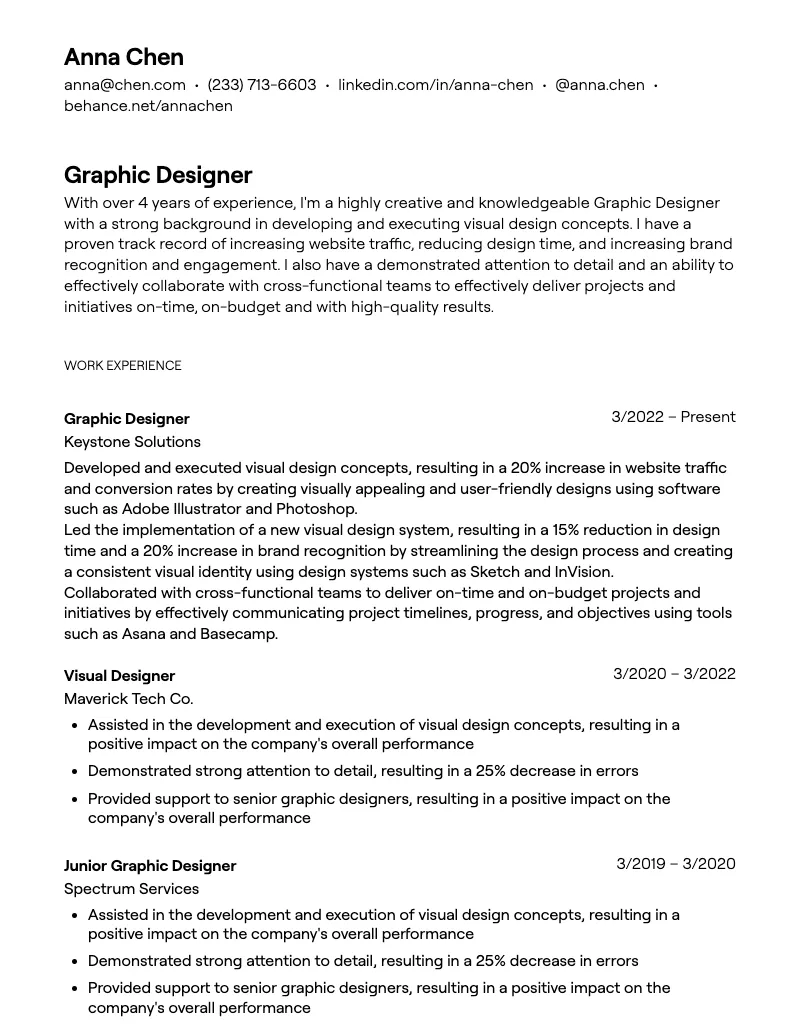
Sending a generic cover letter is a major mistake. Hiring managers can easily spot generic letters, which show a lack of effort and interest in the specific job and company. Always customize your cover letter to match the job description and the company’s brand and values. Research the company and tailor your letter to demonstrate why you’re a good fit. Personalize your letter by mentioning the hiring manager’s name, if available, or by referencing specific projects or initiatives of the company. This personalization proves that you have invested time and effort in your application.
Typos and Grammatical Errors
Typos and grammatical errors are a serious red flag. They signal a lack of attention to detail and professionalism, which can be detrimental for a graphic designer. Proofread your cover letter carefully before submitting it. Use a grammar and spell-check tool, but don’t rely on them solely. Read your letter aloud to catch any awkward phrasing or mistakes. It’s also a good idea to have a friend or colleague review your cover letter for errors. A polished, error-free cover letter shows that you value quality and are meticulous in your work.
Lack of Personalization
Failing to personalize your cover letter is another common mistake. Addressing the hiring manager by name, showing that you understand the company’s mission, and referencing specific projects of the company make your application more impactful. Demonstrate that you’ve done your research. Avoid using generic phrases or templates. Instead, craft a unique narrative that highlights your enthusiasm for the opportunity and your specific qualifications for the role. Showing genuine interest increases your chances of being noticed and increases the likelihood of securing an interview.
Cover Letter Examples for Different Roles
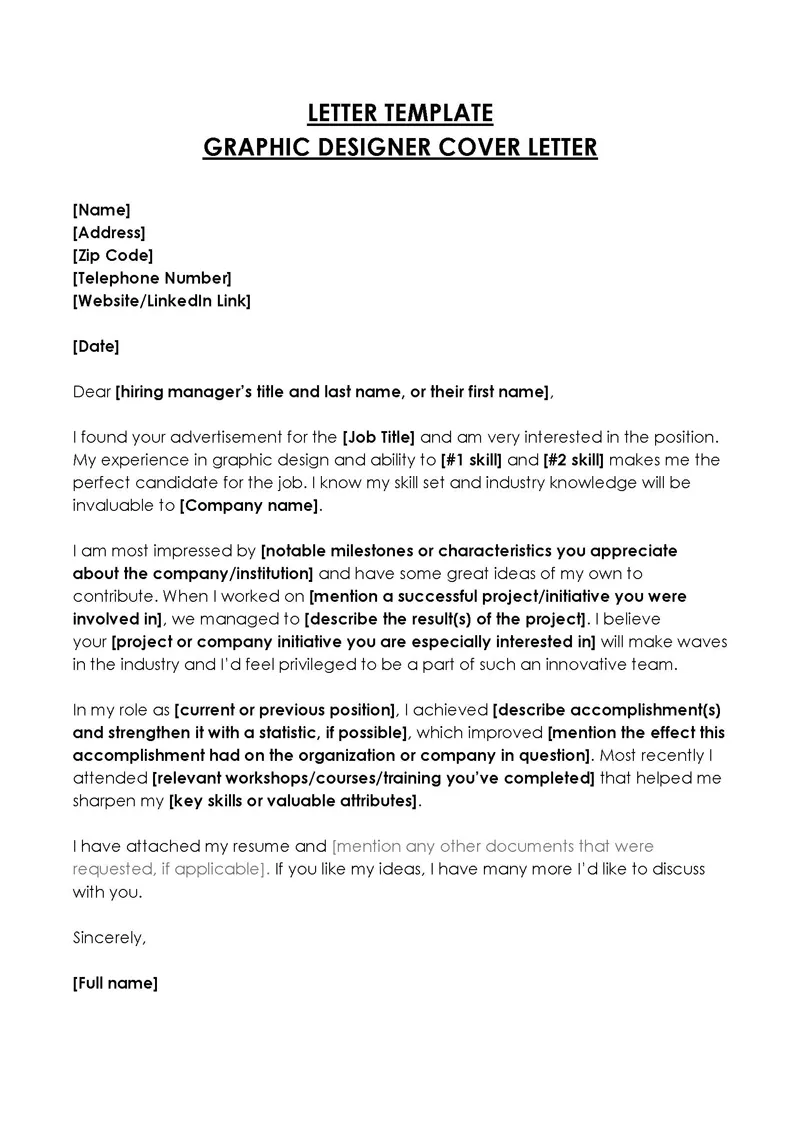
Entry-Level Graphic Designer Cover Letter
For an entry-level position, focus on your education, internships, and any relevant projects. Highlight your foundational skills, software proficiency, and eagerness to learn. Showcase any volunteer work or personal projects that demonstrate your creativity and initiative. Frame your cover letter with enthusiasm, emphasizing your passion for design and your willingness to contribute to the team. Mention any awards, recognition, or positive feedback you have received. Provide clear examples that align with the job description, showing you can apply your design principles to real-world scenarios.
Senior Graphic Designer Cover Letter
As a senior graphic designer, your cover letter should emphasize your leadership skills, project management experience, and ability to deliver results. Highlight your previous accomplishments, such as successful rebranding initiatives, campaigns that boosted sales, or projects that enhanced brand recognition. Demonstrate your expertise in managing design teams and mentoring junior designers. Mention any significant awards or industry recognition you have received. Quantify your achievements with data and metrics to show the impact of your work. Customize your letter to show that you can lead and influence strategic design initiatives.
Freelance Graphic Designer Cover Letter
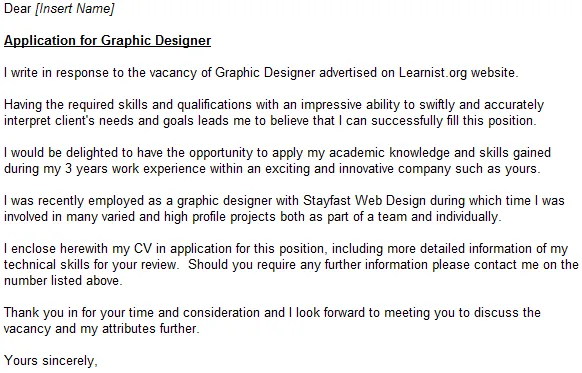
A freelance graphic designer’s cover letter should highlight your ability to work independently, manage multiple projects, and meet deadlines. Showcase your communication skills and ability to collaborate with clients. Provide examples of successful projects and demonstrate how you have helped clients achieve their design goals. Include testimonials or positive feedback from previous clients. Mention your experience in self-promotion, marketing, and client acquisition. Highlight your flexibility, adaptability, and your commitment to delivering high-quality work within the client’s budget and timeline.
Final Thoughts and Resources
Crafting a compelling cover letter is essential for any graphic designer looking to impress potential clients and land their dream job. By following the tips and examples provided, you can create a standout application that showcases your skills, experience, and personality. Always remember to tailor your cover letter to each specific job, highlight your relevant accomplishments, and proofread your work carefully. For additional resources, consider exploring design blogs, career websites, and online courses to further refine your skills and stay up-to-date with industry trends. Good luck with your job search and let your creativity shine!
